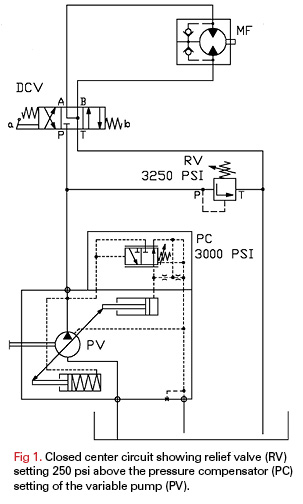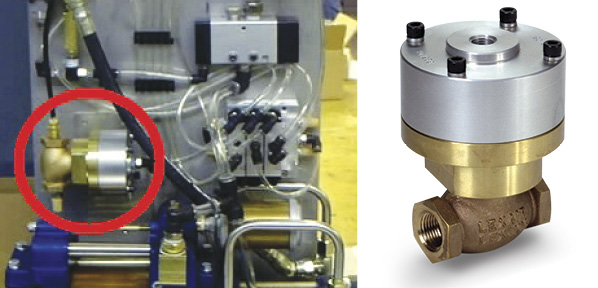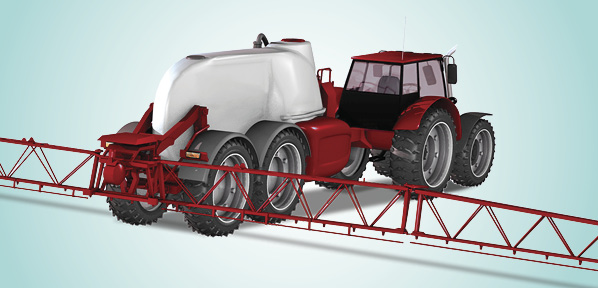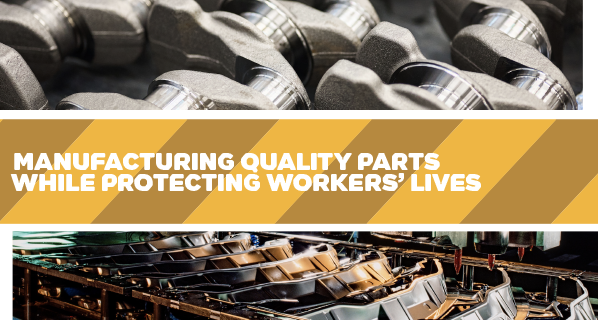How to Solve Hydraulic System Overheating Problems

Based on polls I’ve conducted with my Hydraulics Pro Club members over the years, overheating ranks number two in the list of most common problems with hydraulic equipment. But unlike leaks, which rank number one, the causes of overheating and its remedies are often not as well understood. With the northern summer rapidly approaching, now is a good time for a little revision.
Why Do Hydraulic Systems Overheat?
Heating of hydraulic fluid in operation is caused by inefficiencies. Inefficiencies result in losses of input power, which are converted to heat. A hydraulic system’s heat load is equal to the total power lost (PL) through inefficiencies and can be expressed as PLtotal = PLpump + PLvalves + PLconductors + PLactuators.
If the total input power lost to heat is greater than the heat dissipated, the hydraulic system will eventually overheat. Installed cooling capacity typically ranges between 25% and 50% of continuous input power, depending on the type of hydraulic system and its application.
Hydraulic Fluid Temperature—How Hot is “Too Hot”?
Hydraulic fluid temperatures above 82°C (180°F) damage most seal compounds and accelerate degradation of the oil. While the operation of any hydraulic system at temperatures above 82°C should be avoided, as I explained in my previous column, fluid temperature is too high when viscosity falls below the optimum value for the hydraulic system’s components. This can occur well below 82°C, depending on the fluid’s viscosity grade (weight).
Maintaining Stable Hydraulic Fluid Temperature
To achieve stable fluid temperature, a hydraulic system’s capacity to dissipate heat must exceed its heat load. For example, a system with continuous input power of 100 kW and an efficiency of 80% needs to be capable of dissipating a heat load of at least 20 kW. Assuming this system has an installed cooling capacity of 25kW, anything that increases heat load above 25 kW or reduces the cooling system’s capacity below 25kW will cause the system to overheat.
Consider this example. I was asked to investigate and solve an overheating problem in a mobile application. The hydraulic system comprised a diesel-hydraulic power unit, which was being used to power a pipe-cutting saw. The saw was designed for sub-sea use and was connected to the hydraulic power unit on the surface via a 710-ft umbilical. The operating requirements for the saw were 24 gpm at 3,000 psi.
The hydraulic power unit had a continuous power rating of 37 kW and was fitted with an air-blast heat exchanger. The exchanger was capable of dissipating 10 kW of heat at the prevailing ambient conditions at the work site or 27% of available input power (10/37 x 100 = 27). The performance of all cooling circuit components were checked and found to be operating within design limits.
At this point it was clear that the overheating problem was caused by excessive heat load. Concerned about the length of the umbilical, I calculated its pressure drop. The theoretical pressure drop across 710 feet of 3/4″ pressure hose at 24 gpm is 800 psi. The pressure drop across the same length of 1″ return hose is 200 psi. The theoretical heat load produced by the pressure drop across the umbilical of 1,000 psi (800 + 200 = 1,000) was 10.35 kW. This meant that the heat load of the umbilical was 0.35 kW more than the heat dissipation capacity of the hydraulic system’s heat exchanger. This, when combined with the system’s normal heat load (inefficiencies), was causing the hydraulic system to overheat.
Beat the Heat
There are only two ways to solve overheating problems in hydraulic systems:
- decrease heat load or
- increase heat dissipation
Hydraulic systems dissipate heat, albeit a relatively small amount, through the reservoir. Therefore, check the reservoir fluid level and, if low, fill to the correct level. Check that there are no obstructions to airflow around the reservoir, such as a build-up of dirt or debris.
 Inspect the heat exchanger and ensure that the core is not blocked. The ability of the heat exchanger to dissipate heat is dependent on the flow rate and temperature of both the hydraulic fluid and the cooling air or water circulating through the exchanger. Check the performance of all cooling circuit components and replace as necessary.
Inspect the heat exchanger and ensure that the core is not blocked. The ability of the heat exchanger to dissipate heat is dependent on the flow rate and temperature of both the hydraulic fluid and the cooling air or water circulating through the exchanger. Check the performance of all cooling circuit components and replace as necessary.
Pressure Drop Means Heat
As the long-umbilical story above illustrates, where there is a pressure drop, heat is generated. This means that any component in the system that has abnormal internal leakage will increase the heat load on the system and can cause the system to overheat. This could be anything from a cylinder that is leaking high-pressure fluid past its piston seal to an incorrectly adjusted relief valve. So identify and change-out any heat-generating components.
A common cause of heat generation in closed-center circuits is the setting of relief valves below, or too close to, the pressure setting of the variable-displacement pump’s pressure compensator. This prevents system pressure from reaching the setting of the pressure compensator. Instead of pump displacement reducing to zero, the pump continues to produce flow, which passes over the relief valve, generating heat. To prevent this problem in closed-center circuits, the pressure setting of the relief valve(s) should be 250 psi above the pressure setting of the pump’s pressure compensator (Fig. 1).
Whatever You Do, Don’t Let It Cook!
Continuing to operate a hydraulic system when the fluid is over-temperature is similar to operating an internal combustion engine with high coolant temperature. Damage is guaranteed. Therefore, whenever a hydraulic system starts to overheat, shut it down, identify the cause, and fix it.








I have an engine which I don’t know what causes the overheating. Formerly its working perfectly, but the hydraulic pump has an issue which I replaced the Barrell in the pump. Now we remove the Radiator to see if it’s dirty. However, we also need to clean the radiator because it was too dirty. In view of the above I need your technical advise. Thank you
I have problem on a which is hydraulic oil over heating 330 CL I have changed the fun pump, fun release valve and the fun Moto but still the problem doesn’t solve please i need a technical help
Quack I think you check the thermostat
Très interessants
Ideal condition hydraulic oil temprature high